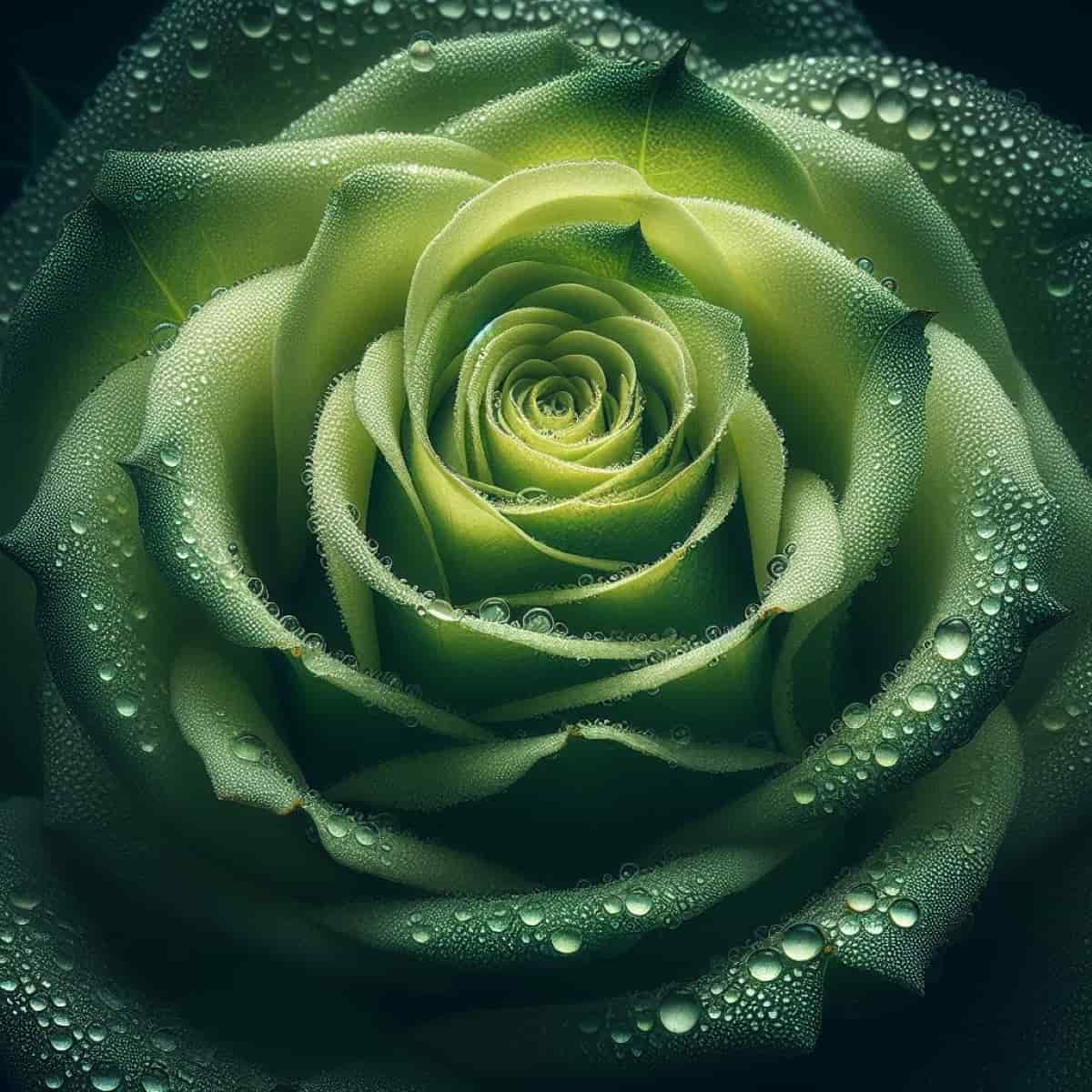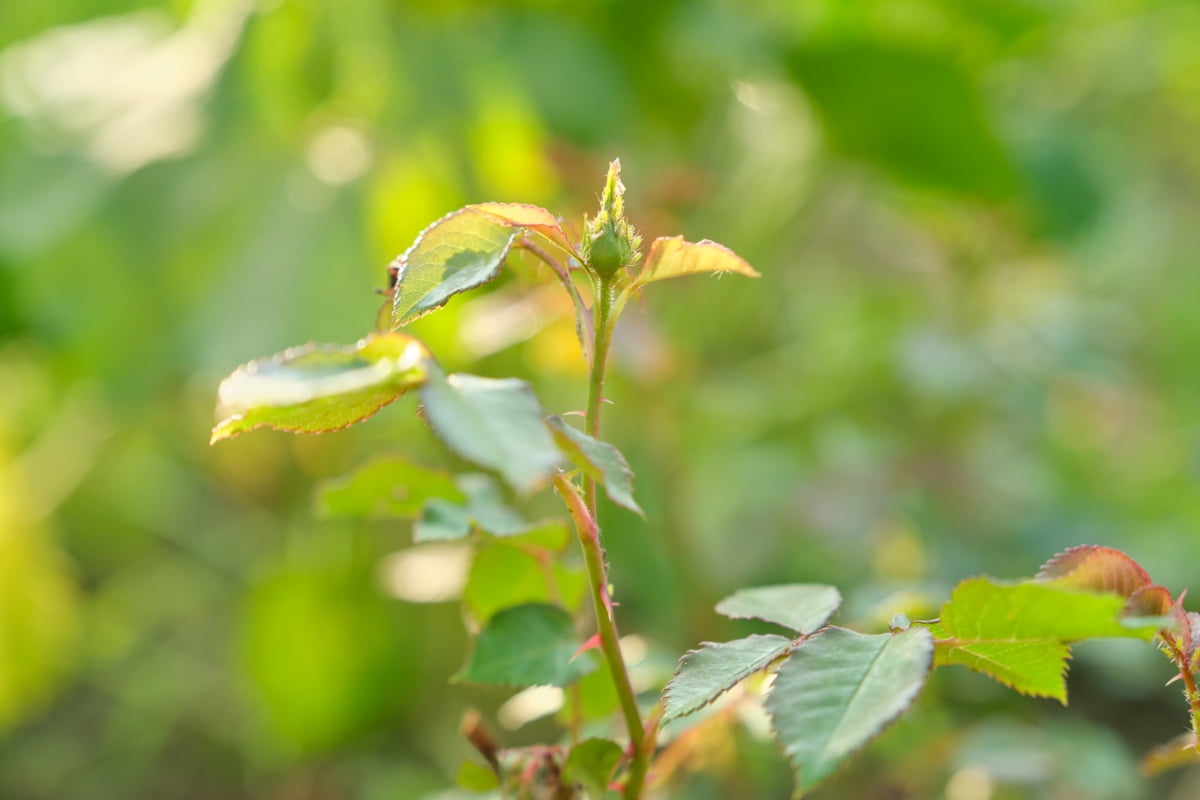In envisioning flowers, our minds often conjure images of fully bloomed petals in vibrant shades of red, pink, white, orange, and gold. These colors serve as beacons for bees and butterflies seeking nourishment. Flowers, renowned for their vivid hues, pose an intriguing question: what if they were green? Would our beloved roses still captivate us, along with the buzzing companions?

Surprisingly, the allure of green roses is not a mere fantasy—they genuinely exist, and their beauty is undeniable! Embark on the fascinating journey of discovering the mystery behind these enchanting green blooms.
All You Need to Know About Green Rose
Exploring Varieties: A Closer Look at Different Types of Rare Green Roses
Green roses captivate with their unique charm, defying traditional expectations of rose hues. The rare green roses listed below, each with its enchanting hue, offer a fresh and distinctive take on the classic symbol of love and admiration. While red roses are widely associated with love and romance, green roses are often linked to concepts like growth, harmony, and nature.
- Super Green Rose
- Mayra’s Green Rose
- Mint Julep Rose
- Greensleeves Rose
- Viridiflora Rose
- Green Ice Rose
- St. Patrick Rose
- Green Tea Rose
Cultivation Secrets: Best Practices for Growing Green Roses
- Soil Type: Choose well-draining, loamy soil with organic matter for green roses. Amend soil with compost to enhance fertility.
- pH Levels: Maintain slightly acidic to neutral soil pH between 6.0 and 7.0 for optimal nutrient absorption.
- Temperature: Green roses thrive in temperatures between 15-24°C. Protect them from extreme heat or cold.
- Humidity: Aim for moderate humidity levels around 40-60%. Good air circulation helps prevent fungal issues.
- Planting Season: Spring is ideal for planting. Ensure frost has passed and the soil is workable.
- Sunlight: Provide at least 6 hours of sunlight daily for robust growth and vibrant color.
Understanding the Unique Pigmentation: What Makes Roses Green?
Roses appear green due to a unique pigmentation process called chimeric chloroplasts. Unlike typical plant cells containing chloroplasts solely in the leaves, rose petals exhibit a rare phenomenon. Genetic mutations cause chloroplasts to develop in the petals, resulting in their green hue. This distinctive trait, often seen in green roses like the “Greenovia,” stems from altered pigment distribution.
In case you missed it: A Comparative Analysis of Dutch Rose Cultivation in 1-acre Open Field and Polyhouse

While chlorophyll usually dominates in leaves, these green roses display a captivating interplay of pigments, giving rise to their unusual coloration. This genetic anomaly offers a fascinating insight into the intricate mechanisms behind the diverse palette of nature’s floral wonders.
Green Rose Care Guide: Tips for Pruning, Watering, and Fertilization
Pruning: Trim green rose bushes in late winter or early spring to encourage new growth. Remove dead, diseased, and overgrown branches and shape the plant for optimal sunlight exposure. Regularly deadhead spent blooms and prune for shape in late winter or early spring.
Watering: Keep the soil moist consistently but not soggy. Water deeply and allow the top soil to dry between watering. Use a drip irrigation system or water at the base to prevent fungal issues. Water your green rose plants approximately 1-2 times a week.
Fertilization: Feed green roses with a balanced fertilizer in spring and again in midsummer. Choose a formulation with equal nitrogen, phosphorus, and potassium ratios to promote overall plant health. Avoid over-fertilizing, as it leads to excessive foliage growth at the expense of blooms. Apply a balanced, water-soluble fertilizer every 2-4 weeks during the growing season.
Pests and Diseases Common to Green Roses: Prevention and Treatment
Preventing and treating pests in green roses, such as aphids, caterpillars, leaf-rolling sawflies, rose slug sawflies, red spider mites, and thrips, is crucial for a thriving garden. While traditional insecticide spraying remains effective, adopting integrated pest management approaches enhances sustainability. Encourage natural predators, like lacewings and ladybugs, and regularly inspect plants for early detection. Maintain plant health through proper watering and soil nutrition to minimize vulnerability.
Additionally, consider companion planting with pest-repelling herbs. For diseases like black spot, powdery mildew, downy mildew, botrytis blight, canker, and rust, early detection is crucial. Use fungicides, prune infected parts, and provide well-drained soil to prevent moisture-related diseases. A holistic approach combining prevention and targeted treatments ensures vibrant and healthy green roses.
Breeding and Propagation Techniques for Rare Green Rose Varieties
Propagating rare green rose varieties involves several techniques. One method is stem cuttings, where healthy shoots are snipped and rooted in a nutrient-rich medium. Additionally, layering can be employed by bending a low-growing stem to the ground level and, covering it with soil until roots develop, and then severing it from the parent plant.
In case you missed it: How to Use Baking Soda to Control Powdery Mildew on Roses: Benefits and Application

Grafting proves effective, too, uniting a desired green rose variety with a hardy rootstock. Whether through cuttings, layering, or grafting, these methods enable enthusiasts to cultivate and preserve the beauty of rare green rose varieties.
The Symbolism and History Behind the Green Rose
As a classic earth tone, green is frequently used as a metaphor for material wealth, fertility, and prosperity. Gifting a bouquet of green roses is a traditional gesture symbolizing happiness and a wish for new beginnings. These roses also symbolize rebirth and regeneration, representing the rejuvenation of one’s life and spirit, aligning with the color green’s connection to nature. The origins of green roses trace back to 18th-century China, where they were initially documented.
Exclusive to the monarch, these roses were carefully cultivated within the famed Forbidden City. The British nursery Bembridge and Harrison played a pivotal role in making green roses accessible to the general public in 1856. Renowned for their sizable blossoms, these plants quickly captivated the English populace, and news of their magnificence swiftly spread worldwide. While not as widely recognized as their traditional red counterparts, green roses still enchant with their unique beauty.
Green Rose Price and Where to Get It?
It may not be readily available in the market, and prices can vary based on the method used to obtain the green color. To find Green Roses, consider contacting specialized florists, online flower shops, or botanical gardens that may carry or provide information about this unconventional bloom. Prices can fluctuate, ranging from Rs. 500 to Rs. 2000, depending on factors such as size, quality, and rarity.
In case you missed it: How to Use Neem Oil on Desert Rose: A Natural Way to Get Rid of Bugs from Desert Rose Plants

Conclusion
In conclusion, green roses are fascinating and rare specimens that bring a touch of uniqueness to gardens and floral arrangements. They are created through careful breeding and hybridization, and each variety has its distinct shade of green. Whether used for symbolic purposes or simply for their aesthetic appeal, green roses continue to capture the imagination of rose enthusiasts worldwide.
- Ultimate Guide to Ossabaw Island Hog: Breeding, Raising, Diet, and Care
- Ultimate Guide to Juliana Pig: Raising Facts, Size, Diet, Care, and Lifespan
- Raising Lleyn Sheep: Disadvantages, Price, Uses, Characteristics, and Care
- Ultimate Guide to Meishan Pig: Breed Facts, Breeding, Raising, and Care
- Ultimate Guide to Teacup Pigs: Raising, Diet, Lifespan, Cost, and Care
- Guide to Raising Poll Dorset Sheep: Facts, Profile, Characteristics, Uses, and Care
- Ultimate Guide to Bighorn Sheep: Characteristics, Diet, Lifespan, Breeding, and Lifecycle
- Ultimate Guide to Raising Katahdin Sheep: Farming Facts, Breed Profile, Uses, and Care
- Ultimate Guide to Raising Oreo Cows: Belted Galloways Farming Facts, Profile, Uses, and Care